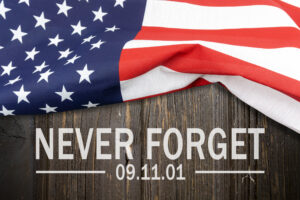A 9/11 Trip Through Insurance Law
Catastrophes, Mother Nature, and motivated lawyers are a potent combination.

Riddle me this: How is an insurance policy like the Internal Revenue Code?
Because, if the stakes are sufficiently high, a motivated reader will find a loophole in it.

Generative AI In Legal Work — What’s Fact And What’s Fiction?

For today’s history lesson, let’s start with 9/11. Damages caused by terrorist attacks had been relatively small before 9/11. Folks didn’t really worry about the terrorism coverage in insurance policies because any ambiguities could be worked out at relatively low cost.
Then there was 9/11.
Motivated readers were encouraged to take a close look at the policy language. By the time the litigation had ended, insurers were drafting their terrorism policies more artfully.
By 2005, terrorism policies were in reasonably good shape. And, then, Hurricane Katrina hit the Gulf Coast. The distinction between damage caused by a hurricane — wind — and damage caused by flood or wind-driven water came to the fore. Insurance policies hadn’t previously drawn that line too vividly. Katrina, and a multitude of motivated readers of insurance policies, fixed that.
Sponsored

The Business Case For AI At Your Law Firm


Generative AI In Legal Work — What’s Fact And What’s Fiction?


Is The Future Of Law Distributed? Lessons From The Tech Adoption Curve

Navigating Financial Success by Avoiding Common Pitfalls and Maximizing Firm Performance
Then, a volcano erupted in Iceland in 2010, disrupting air travel throughout Europe. Insurance policies hadn’t previously thought about the difference between “business interruption” caused by property damage — your manufacturing plant burned down, disrupting your business — versus “business interruption” caused by something other than property damage — air travel being disrupted by a huge cloud of ash. The 2010 eruptions of Eyjafjallajökull, and motivated readers of insurance policies, fixed that.
After the events of 2010, business interruption policies addressed ash clouds pretty carefully. But what about pandemics? Before 2019, insurance policies didn’t think about how your business could be interrupted by a disease that was infecting the world but not infecting someone at your business or in its environs. COVID-19 solved that.
And then there were fires in California. Insurance policies covered fire. But insurance for mudslides was often insured differently or subject to sublimits. What happens if a fire burns vegetation and scorches the earth, leaving the ground susceptible to a later mudslide?
And then there was Hurricane Ida. Who knows what we’ll learn from that disaster?
But we’re sure to learn something.
Sponsored

Legal AI: 3 Steps Law Firms Should Take Now

Navigating Financial Success by Avoiding Common Pitfalls and Maximizing Firm Performance
It’s like the Internal Revenue Code.
Motivated tax lawyers search for loopholes in the code. The lawyers naturally find one. Businesses crash through the loophole. Eventually, the IRS figures out how to close the loophole, and motivated tax lawyers search for the next loophole.
In the insurance industry, a catastrophe is often the triggering event.
Hundreds of motivated insurance lawyers immediately search for coverage. They find a theory. Policyholders crash through the theory. The insurance industry figures out how to revise the insurance policies, so the argument for coverage is foreclosed in the future. Time and events move on, and the motivated people search for new veins to mine.
Mother Nature, and motivated lawyers, are a potent combination.
Mark Herrmann spent 17 years as a partner at a leading international law firm and is now deputy general counsel at a large international company. He is the author of The Curmudgeon’s Guide to Practicing Law and Drug and Device Product Liability Litigation Strategy (affiliate links). You can reach him by email at inhouse@abovethelaw.com.







